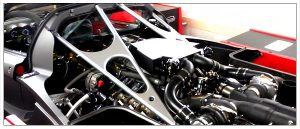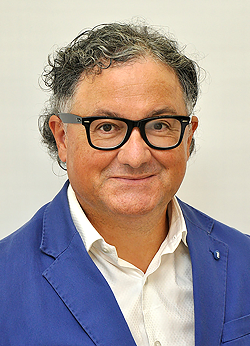The field of high performance engineering, with a particular focus on the ones that relate to the Motorsport Industry, are going through global technological and business development changes. The right kind of mindset and strategic tools are essential to generate and utilise at best the opportunities that such
changes generate.

NOTHING CAN BE TAKEN FOR GRANTED
The enduring troubles in the working relationship between McLaren and Honda have brought to the attention of pundits and general public alike that organisational culture’s ways to work do matter when trying to establish a strong cooperations among entities that belong to different cultural and mindset contexts.
Honda (appearing to have solved some of its performance and reliability troubles during the recent Malaysian Gran Prix) is betting again on its F1 future with a new partner, Toro Rosso. Lots of energy and positivity has been ritually declared within the announcement of the deal. James Key (Toro Rosso Director) has pointed out that “We look forward to a strong, stable and proactive partnership with our colleagues at Honda”, Takahiro Hachigo has stated “Everyone at Honda is looking forward to working with Toro Rosso, and we are excited to start this new chapter in our Formula 1 journey with them. (…) Honda and Toro Rosso will work as one team to strive for progress and a successful future together”. Two key words to watch for in these statements are ‘proactive’ and ‘one team’; if the two entities will manage to concretely put them into practice results will be reached.
On the organisational culture topic Honda’s Motorsport General Manager has pointed out that things did not work out with McLaren because clearly Honda failed to reach the set goals of performance (reasons for which we have written about in previous articles) yet quite interestingly he states “What we have learned from McLaren is that they have a long history, the company is pretty big, everything is systematic and everything is sorted out so may be we can apply those systems, the way of thinking, into our development”. At the same time he states “On the other hand McLaren is sometimes too systematic. Because of the system they have, it is sometimes difficult to make small tweaks for improvements – it takes a bit of time. May be with Toro Rosso, they are small enough to make changes quicker”.
Proactive, one team, a less systemic more flexible approach to change and development; they seem a possible recipe to reach targets that the ‘one-team’ will set. It is certainly evident that Liberty Media facilitated the deal in order to keep in F1 a relevant global automotive manufacturer. At the same time even this represents one of the many opportunities that is important to identify and catch.
CREATING CONCRETE SYNERGIES FOR GROWTH
In High Performance Engineering and Motorsport’s management terms all of this becomes meaningful because it points out that today working with companies internationally requires setting up cooperative dynamic synergies ready to face continuos changes (caused by factors as market dynamics, budgets, new series that are attracting investments) and this requires a strong sense of cultural awareness to be utilised as a leverage to success.
The question that any organisation should ask is: how do I need to create the specific value essential to a synergic success? To note that nowadays any lasting relationship with clients needs to be perceived from the perspective of a partnership where nothing is taken for granted.
In other words how know-how assets are integrated in such partnerships in order to generate overall value and growth for all (achieving results on track is in these terms a metaphor for achieving results on any given market).
Assumptions, at the roots of expectations, need to be spelled out from the beginning and rooted on facts and hard data as much as possible in order to integrate and synergies organisational cultures.
AN EXAMPLE: RENAULT SPORT F1 AND MICROSOFT
Recently Renault Sport Pierre d’Imbleval has illustrated a concrete example that illustrate these dynamics is the one relevant to the partnership between Renault Sport Formula One Team and Microsoft. Renault Sport has spelled out the key requirements: the need to use technology as an essential support to implement technical changes at an increasingly faster pace; the need to channel and elaborate at best data gathering; the need to share swiftly information among several departments in order to stimulate organisational cooperation. The pragmatism of Microsoft’s organisational culture has focused on these needs utilising technological solutions already available in its portfolio or customising new ones. All of this has strengthen Microsoft’s know-how by putting it to the test within one of the most challenging competitive environments while establishing in the process successful operational and branding synergies with Renault.
MOVING FORWARD
Change is constant and relevant in any market, high performance engineering and Motorsport Industry in particular because of its very own nature. The leveraging power of clear assumptions, expectations and organisational cultural awareness are key aspects to manage for any Small and Medium Enterprise wishing to grow through the development of solid long term synergies with global organisations of any size. Updating and upgrading the way that business strategies are developed is part of the entire process and it will be described in the upcoming second part of this article.
